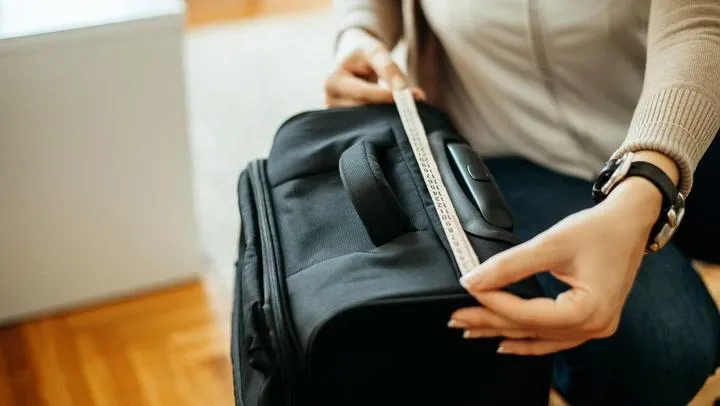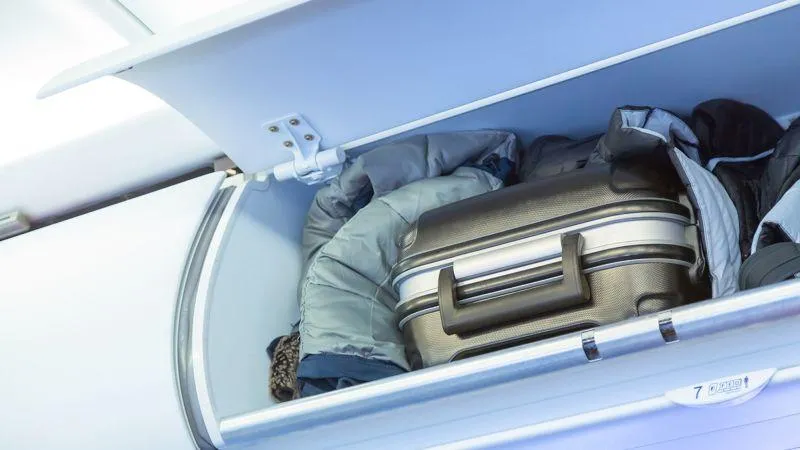How to Choose the Perfect Carry-On Size for Your Next Flight
One of the most important decisions when planning for an upcoming trip is selecting which bag to use for carry-on luggage. Picking the right carry-on size can mean the difference between having plenty of space for all your essentials or checking a bag at the gate. In this article, I’ll discuss everything you need to know to find a carry-on that fits cleanly under the seat in front of you on most major airlines.
Standard Carry-On Size Requirements
Most domestic flights in the United States allow one carry-on bag that meets the standard size limits set by the Federal Aviation Administration (FAA). According to the FAA, a carry-on bag cannot exceed 45 linear inches – that’s 22 inches high x 14 inches wide x 9 inches deep. However, each airline has their own interpretation of these guidelines, so always check the specific size policies for your carrier.
From my experience traveling with different airlines, the maximum dimensions that will reliably fit under any seat are closer to 22 x 14 x 9 inches. Going over even a couple inches risks your bag getting stowed in the overhead bins instead of under your seat. With other passengers’ bags in the bins, you may end up having to gate check your bag anyway. So if space is a priority, stick to bags right at or below the FAA limits.
Factors to Consider When Choosing a Carry-On Size
When picking the right carry-on bag size, it’s important to think about more than just the dimensions. Consider these additional factors:

- Intended activities: A trip for hiking or beach adventures requires more gear than a long weekend in the city. Factor in all the essential items you’ll need.
- Length of trip: Shorter trips allow packing more tightly, while longer stays may need more clothing options.
- Personal preferences: Do you mind a smaller bag that fits snugly, or would you prefer more room even if it risks checking?
Balancing all these aspects helps determine if a “personal item” size bag is enough, or if you need every inch a standard carry-on provides. Getting the right volume for your needs is just as important as qualifying dimensions.
Common Carry-On Sizes That Fit Under Seats
Here are some of the most popular carry-on sizes that reliably fit under airplane seats per airline policies:
- Tumi Alpha 3 Lightweight Carry-On – 21.75″ x 14.25″ x 9″ – Perfect for shorter trips where every ounce counts. Fits my essentials for 3-4 days with room to spare.
- Briggs & Riley Baseline carry-on – 21.5″ x 14.8″ x 9″ – Classy hard-sided case with smooth wheels and plenty pockets. Slightly larger than most personal items.
- Amazon Basics Hardside Spinner – 22″ x 14″ x 9″ – Inexpensive, expandable, and lightweight. Expands to full acceptable size if needed. Great budget option.
- eBags TLS Mother Lode Weekender – 21.75″ x 15.75″ x 9.25″ – Roomy without maxing out carry-on dimensions. Lots of internal organization. Fits a week’s worth of clothing and gear.
As you can see, most expert-recommended carry-on sizes top out right around 22″ tall. Any larger and they risk not fitting properly under many airplane seats. Of course, plenty of bags exist that squeeze into this range while maximizing internal space through compression systems or light materials.
How Airlines Interpret Carry-On Size Limits
Every airline has different allowances even if they fall under the general FAA regulations. Here are a few things I’ve experienced regarding how some top carriers enforce sizing:

- American: Generally pretty lenient as long as you’re close. I’ve brought bags slightly oversized without issue.
- Delta: Stricter adherence to limits. I once had to check a bag for being half an inch too tall. Better to stay well under limits.
- United: Similar to Delta in strictly enforcing maximums. Bags are measured tightly at gate. Expect to check if dimensions are fuzzy.
- Southwest: Very lax about sizing for carry-on. Bags up to full checked bag size usually OK. Big benefit of no bag fees.
As you can kind of see, it’s basically impossible to say definitively what will or won’t work on a given flight. When in doubt, stick to the most conservative dimensions. You don’t want your vacation to start with a checked bag fiasco!
Additional Tips for Using a Carry-On
Now that you know which carry-on size fits best, here are a few extra tricks I’ve learned from experience to help everything go smoothly:
- Pack light! Resist temptation to overload your bag. You want it to slide easily under the seat.
- Use compression packing cubes. They squish clothes down to maximize your carry-on’s capacity.
- Bring a small daypack as a “personal item.”Things you’ll need on the plane like electronics, snacks, book stay separate.
- Place carry-on in the rear of the cabin. Easier to access and less likely to annoy people when fetching things.
- Check bag dimensions before leaving for the airport! Avoid disappointment at the gate.
With some research into size limits and packing strategies, you’ll be able to confidently board any flight knowing your carry-on is regulation size and packed efficiently. Just remember – when in doubt, go smaller rather than risk having to check your bag! Let me know if you have any other carry-on questions.
I hope this guide helped answer your question about what size carry-on fits under airplane seats. Please feel free to reach out if you need additional travel tips or have other questions. Safe travels!

Carry-On Luggage Sizes That Fit Under Plane Seats
| Luggage Type | Maximum Dimensions | Note |
|---|---|---|
| Backpack | 22″ x 14″ x 9″ | Most common choice, fits personal items |
| Rolling Bag | 22″ x 14″ x 9″ | Wheels helpful for airport mobility |
| Small Suitcase | 21″ x 14″ x 9″ | Fits under most seats |
| Large Suitcase | 22″ x 14″ x 15″ | May not fit under some premium economy seats |
| Duffel Bag | 21″ x 12″ x 12″ | Less rigid than suitcases |
FAQ
-
What size carry-on bag fits under an airplane seat?
Most major airlines allow carry-on bags that are no larger than 22 inches tall x 14 inches wide x 9 inches deep. Basically, that’s about the size of a regular backpack or small suitcase. As long as it fits in the space under the seat in front of you without sticking out, it should be fine.
-
Can I bring a bigger bag if it fits in the overhead bin?
At the same time, the airlines say it needs to fit in the overhead compartment if the under-seat space is full. Nevertheless, even if a larger bag fits above, the staff might still ask you to check it if the flight is full. Despite what fits, the size limit is there to make room for all passengers. So it’s best not to take chances with an oversized carry-on.
-
Will I have to check a bag that’s just an inch too big?
Maybe not always. The employees have some flexibility to use their judgment. A bag that’s only slightly larger may be allowed if it doesn’t seem like it will be an issue. However, during busy travel periods they tend to strictly enforce the size policy. It depends on the individual staff and how busy the flight is. Overall, it’s better to stay clearly within the limits if possible rather than risk having to gate-check your bag.
-
Do hardside suitcases work better than soft duffel bags?
On the one hand, soft-sided duffel bags can squeeze into tighter spaces more easily than hard bags. However, hardside cases do stay upright on their own without support. With a soft bag, there’s a chance it could end up smooshed under the seat during a full flight. Perhaps a hardside spinner suitcase is the best option – it rolls easily like a duffel but keeps its shape. Either way, make sure the bag fits with room to spare when you pack it. Ask yourself – is it really carry-on size?

What if my carry-on is just a bit too big when I get to the airport?
Well, this is basically my worst fear when flying, to be honest. If I showed up to the gate only to discover my bag no longer fits the guidelines, I’d be so annoyed with myself! Remember that one time I packed way too much in my backpack for a weekend trip? I had to rearrange everything just to zip it up. What a nightmare that would be at the security checkpoint. Anyway, if it happens, I suppose your options would be to check the bag at the counter for a fee, or see if you can rearrange things to squeeze it under the seat. Maybe unpack some clothes or flatten things out more? Other passengers might stare holes through you while you fiddle with the zippers, though. In the end, it’s always better to plan and prepare so you aren’t scrambling at the last minute. Then you can just chill and enjoy your flight.
Is it worth paying extra for a smaller personal item?
That’s an interesting question. Some travelers think it’s worth the investment to purchase a smaller backpack or bag within the personal item size limits. A “laptop sleeve” type bag basically gives you an extra carry-on. And no worries about it fitting under the seat since it goes at your feet. At first glance, that seems pretty amazing – an extra bag for the boarding pass price basically. However, you have to factor in the cost of the new bag. And what if you only fly once or twice a year? It may take a long time to recoup that cost versus checking a large bag occasionally. Also, packing light can be a fun challenge.Maybe it’s better to get creative with organizing rather than buy more “stuff”. But for frequent flyers, a small personal item could save a lot of headaches in the long run. So I don’t have a clear answer – it depends on your individual situation!
Will airlines really enforce the carry-on size rules?
From what I’ve seen, most airlines are pretty serious about enforcing carry-on size limits these days. Passengers who have obviously larger bags seem to get stopped more often during busy travel periods. However, in my experience it does still depend a bit on how attentive the staff is on any given day. I once brought a bag that was pushing the limits but they let me onboard without issue. But when I took a similar bag a few months later, they measured and finally made me check it. It’s kind of a gamble. If the flight isn’t full, they may be more lenient. At the same time, too many large carry-ons can hold up the boarding process. In the end, for the sake of others it’s only fair we all play by the same rules. Just be prepared to check the bag to be safe, unless your carry-on is very clearly regulation size with no doubts. Does that help summarize the situation? Let me know if any other questions come to mind!
